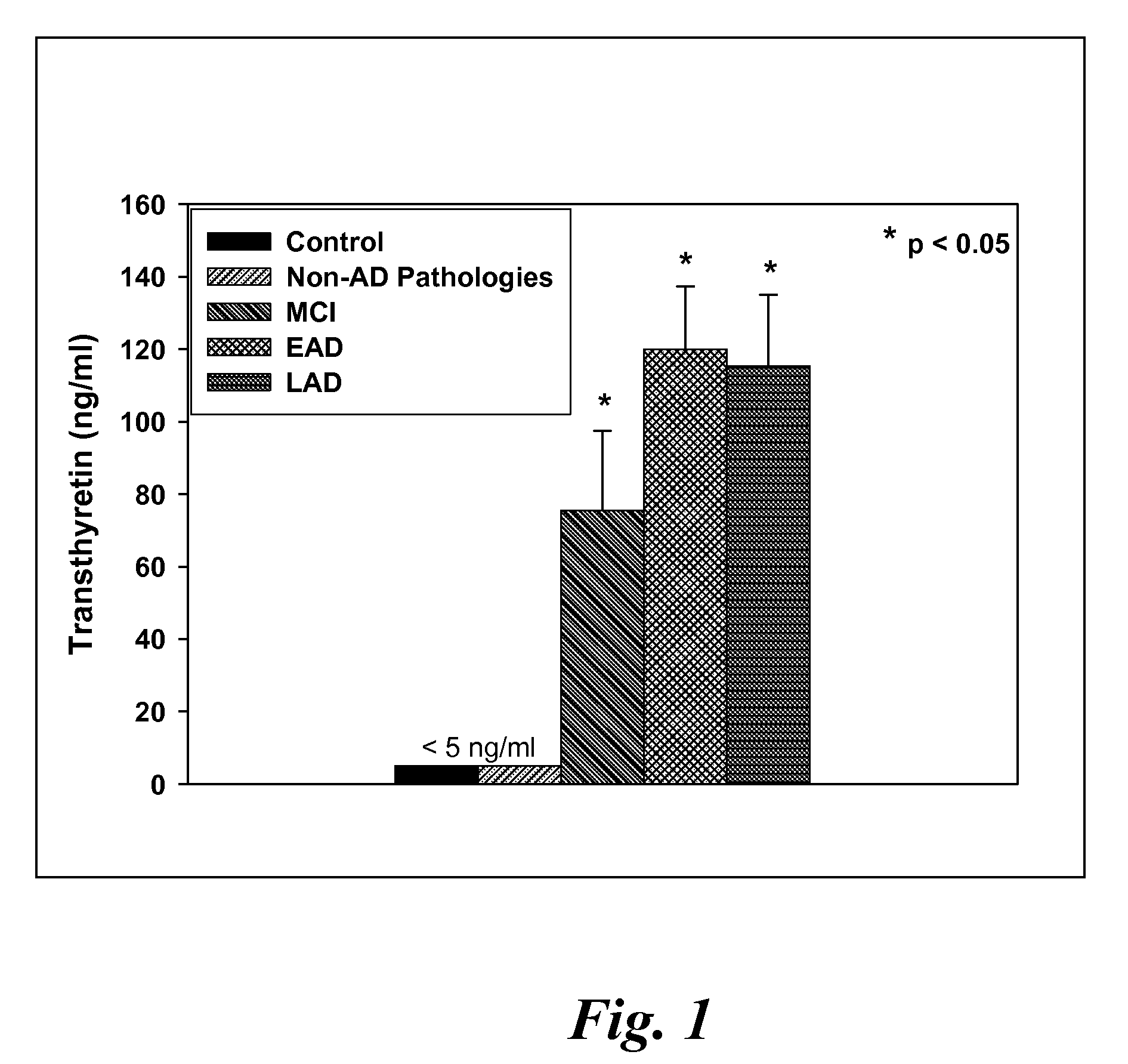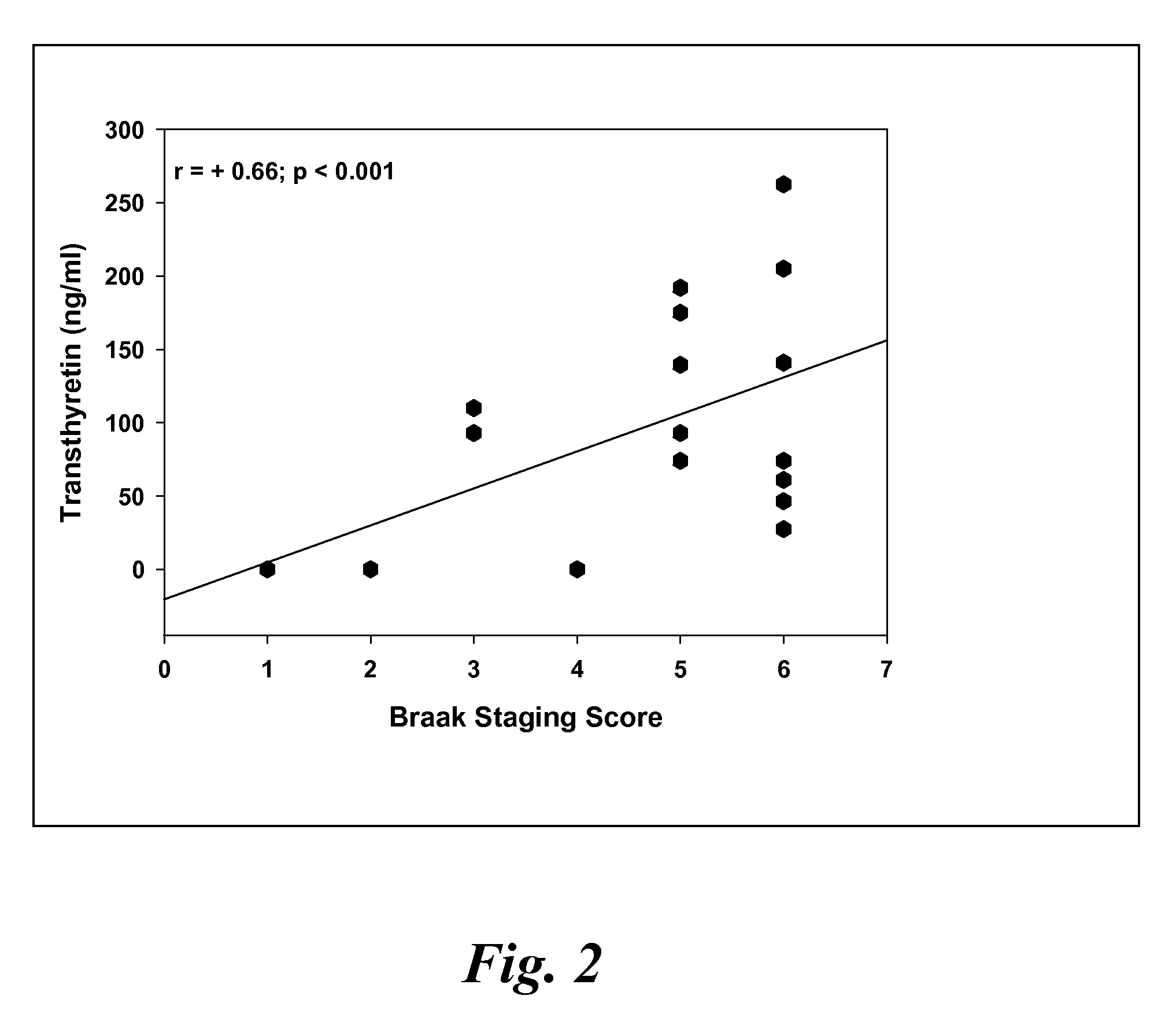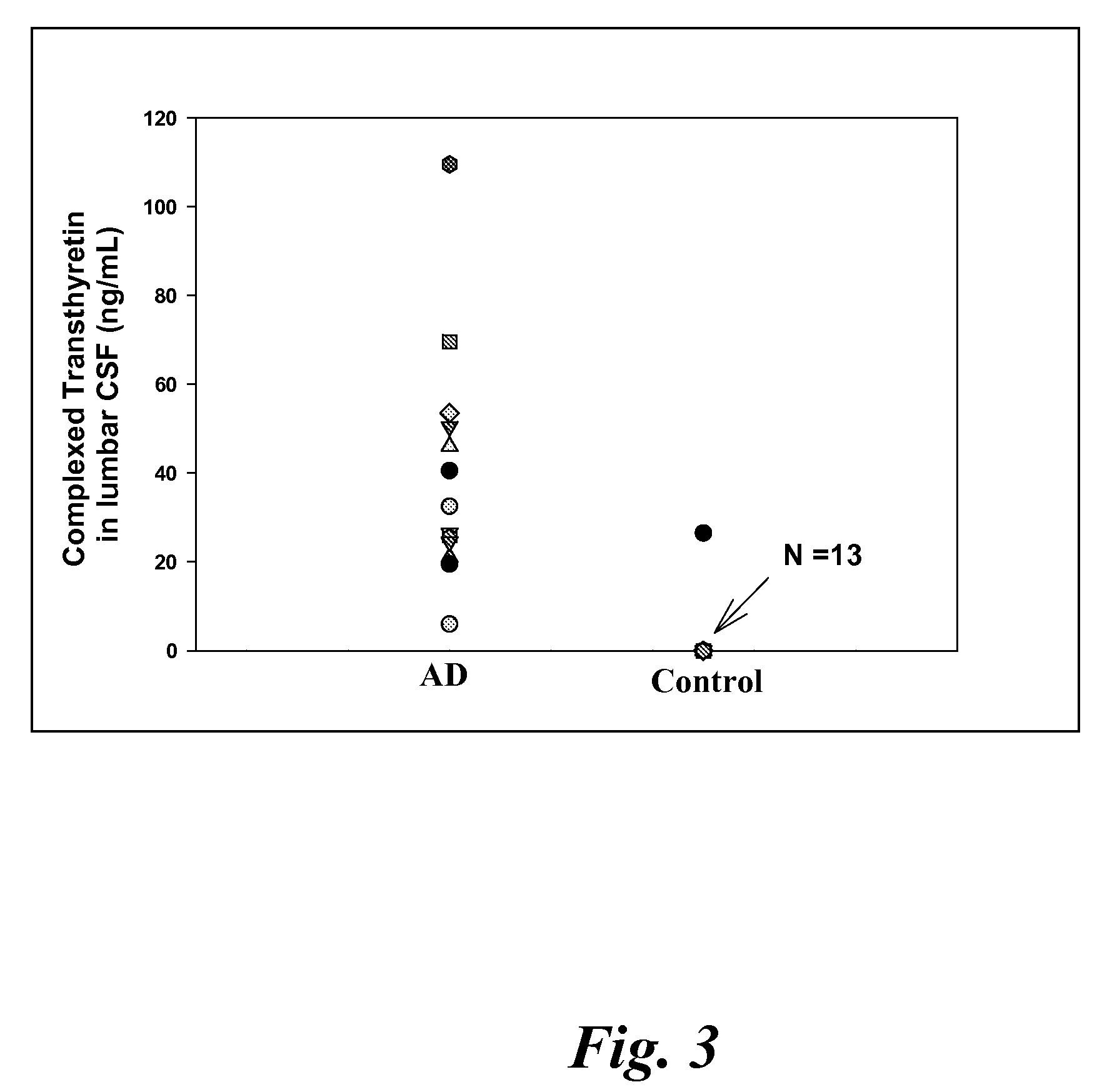Biomarkers of mild cognitive impairment and alzheimer's disease
a cognitive impairment and biomarker technology, applied in the field of detection and monitoring of neurodegenerative disorders, can solve the problems of increasing automatic phrases and cliches, estimating the cost of 100 billion dollars per year, and inability to adequately incorporate new information into memory
- Summary
- Abstract
- Description
- Claims
- Application Information
AI Technical Summary
Problems solved by technology
Method used
Image
Examples
example 1
Determining Presence of Biomarker in Sample
[0118]CSF samples were collected from 6 MCI, 4 EAD, 9 LAD and 8 age-matched control subjects at autopsy from the lateral ventricle using an 18 gauge cannula attached to virgin polypropylene syringes. Twenty to fifty milliliters of CSF were withdrawn, centrifuged at 10,000 g to pellet cells and aliquoted into 2 ml cryovials. The vials were immediately frozen in liquid nitrogen and maintained at −80° C. until used for analysis. For specificity studies CSF specimens were obtained in a similar manner from 5 subjects with diffuse Lewy body disease (LB), 2 subjects with Parkinson's disease (PD), 2 subjects with parasupranuclear palsy (PSP) and 3 subjects with frontotemporal dementia (FTD). Subjects used in these studies met standard histopathologic criteria for the diagnosis of AD (Mirra et al. Neurology 91:479-484 (1991); NIA-Reagan Institute Neurobiol Aging 18:S1-2 (1997). All control patients were followed longitudinally at the University of K...
example 2
Measuring Levels of Biomarkers
[0120]To measure levels of the protein complex in CSF, a sandwich ELISA has been developed using standard protocols as described in Techniques in Molecular Biology and as shown schematically in FIG. 6. To trap the complex of interest, 96-well plates were coated overnight at 4° C. by adding 200 μl 1 μg / ml rat anti-human prostaglandin-D-synthase (Cayman Chemical, Ann Arbor, Mich. Catalog # 10004342) raised against recombinant human prostaglandin-D-synthase in PBS containing 0.1% NaN3 (PBSN) per well. For quantification, one row of the plate is coated overnight with purified human transferin (Sigma Chemical, St. Louis, Mo.) at 25 ng / ml, 50 ng / ml, 125 ng / ml, 250 ng / ml, and 500 ng / ml in PBSN. After rinsing 5 times with PBSN (200 μl / wash), the plates are blocked for 2 hr with 100 μl 5% dry milk / 15% goat serum in PBSN. The plates are washed 5 times with PBST and incubated 1 hr at room temperature with 50 μl untreated CSF. The plates are washed 5 times with PBS...
PUM
 Login to View More
Login to View More Abstract
Description
Claims
Application Information
 Login to View More
Login to View More - R&D
- Intellectual Property
- Life Sciences
- Materials
- Tech Scout
- Unparalleled Data Quality
- Higher Quality Content
- 60% Fewer Hallucinations
Browse by: Latest US Patents, China's latest patents, Technical Efficacy Thesaurus, Application Domain, Technology Topic, Popular Technical Reports.
© 2025 PatSnap. All rights reserved.Legal|Privacy policy|Modern Slavery Act Transparency Statement|Sitemap|About US| Contact US: help@patsnap.com



